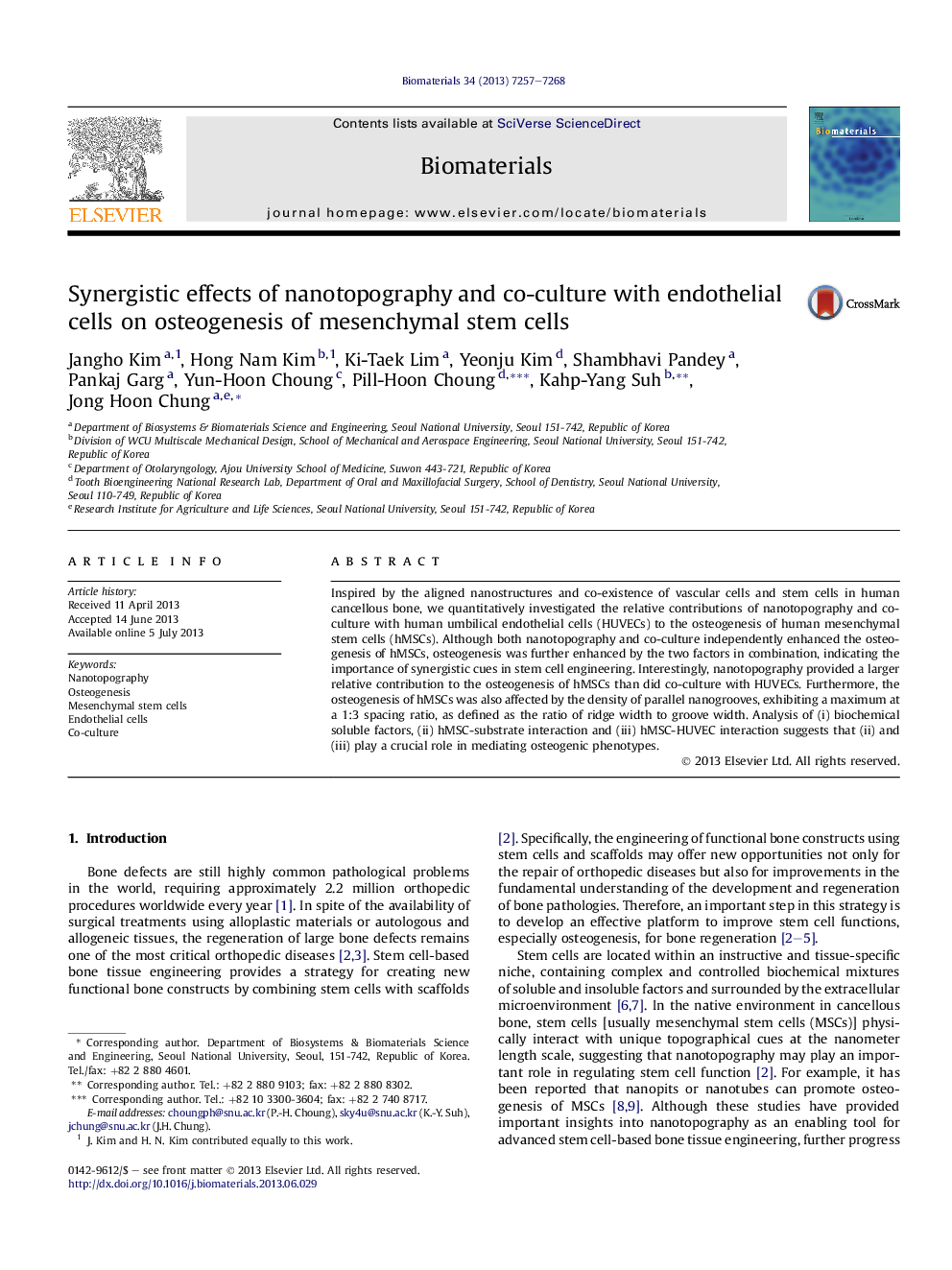| Article ID | Journal | Published Year | Pages | File Type |
|---|---|---|---|---|
| 10228675 | Biomaterials | 2013 | 12 Pages |
Abstract
Inspired by the aligned nanostructures and co-existence of vascular cells and stem cells in human cancellous bone, we quantitatively investigated the relative contributions of nanotopography and co-culture with human umbilical endothelial cells (HUVECs) to the osteogenesis of human mesenchymal stem cells (hMSCs). Although both nanotopography and co-culture independently enhanced the osteogenesis of hMSCs, osteogenesis was further enhanced by the two factors in combination, indicating the importance of synergistic cues in stem cell engineering. Interestingly, nanotopography provided a larger relative contribution to the osteogenesis of hMSCs than did co-culture with HUVECs. Furthermore, the osteogenesis of hMSCs was also affected by the density of parallel nanogrooves, exhibiting a maximum at a 1:3 spacing ratio, as defined as the ratio of ridge width to groove width. Analysis of (i) biochemical soluble factors, (ii) hMSC-substrate interaction and (iii) hMSC-HUVEC interaction suggests that (ii) and (iii) play a crucial role in mediating osteogenic phenotypes.
Related Topics
Physical Sciences and Engineering
Chemical Engineering
Bioengineering
Authors
Jangho Kim, Hong Nam Kim, Ki-Taek Lim, Yeonju Kim, Shambhavi Pandey, Pankaj Garg, Yun-Hoon Choung, Pill-Hoon Choung, Kahp-Yang Suh, Jong Hoon Chung,
